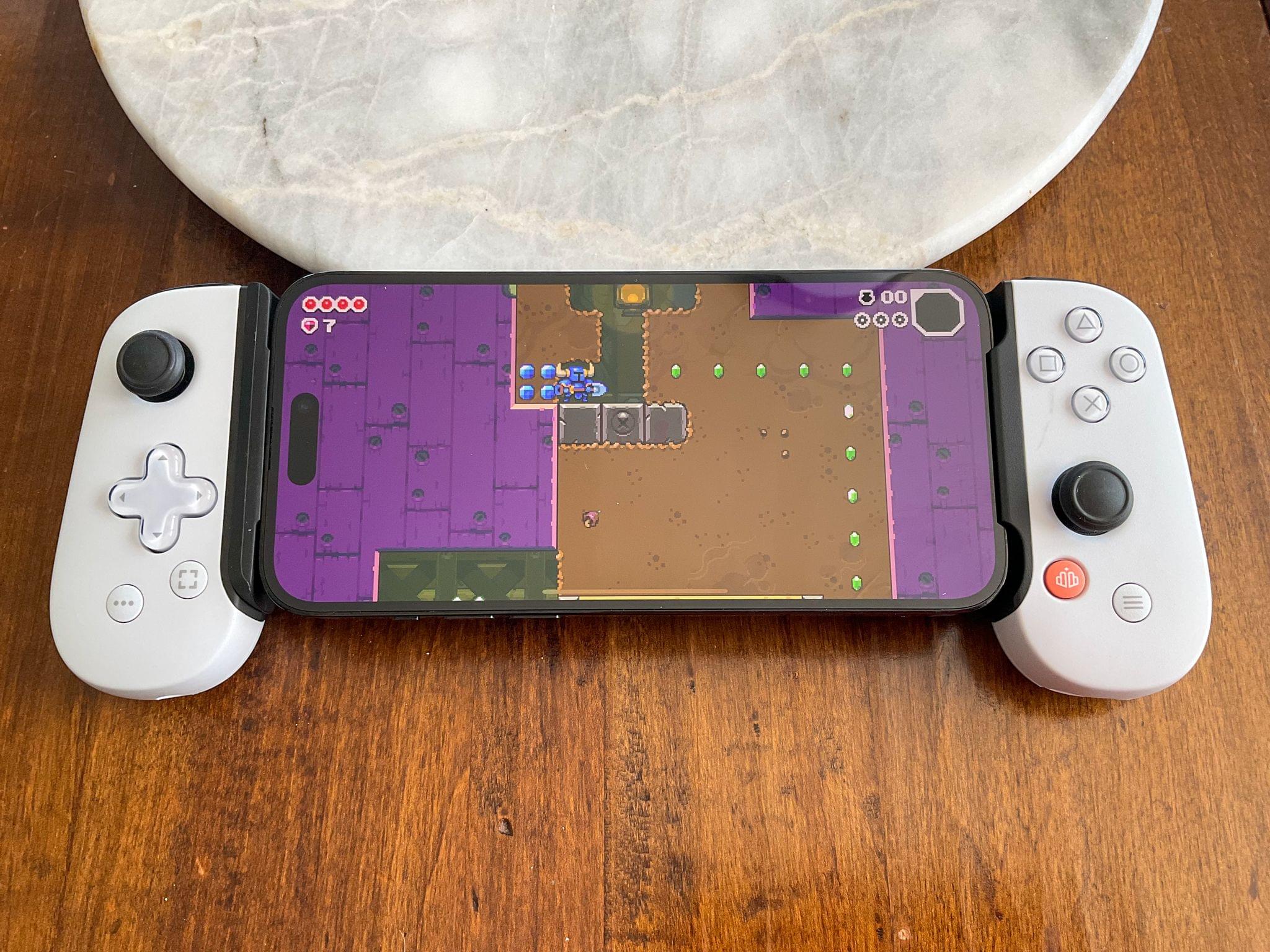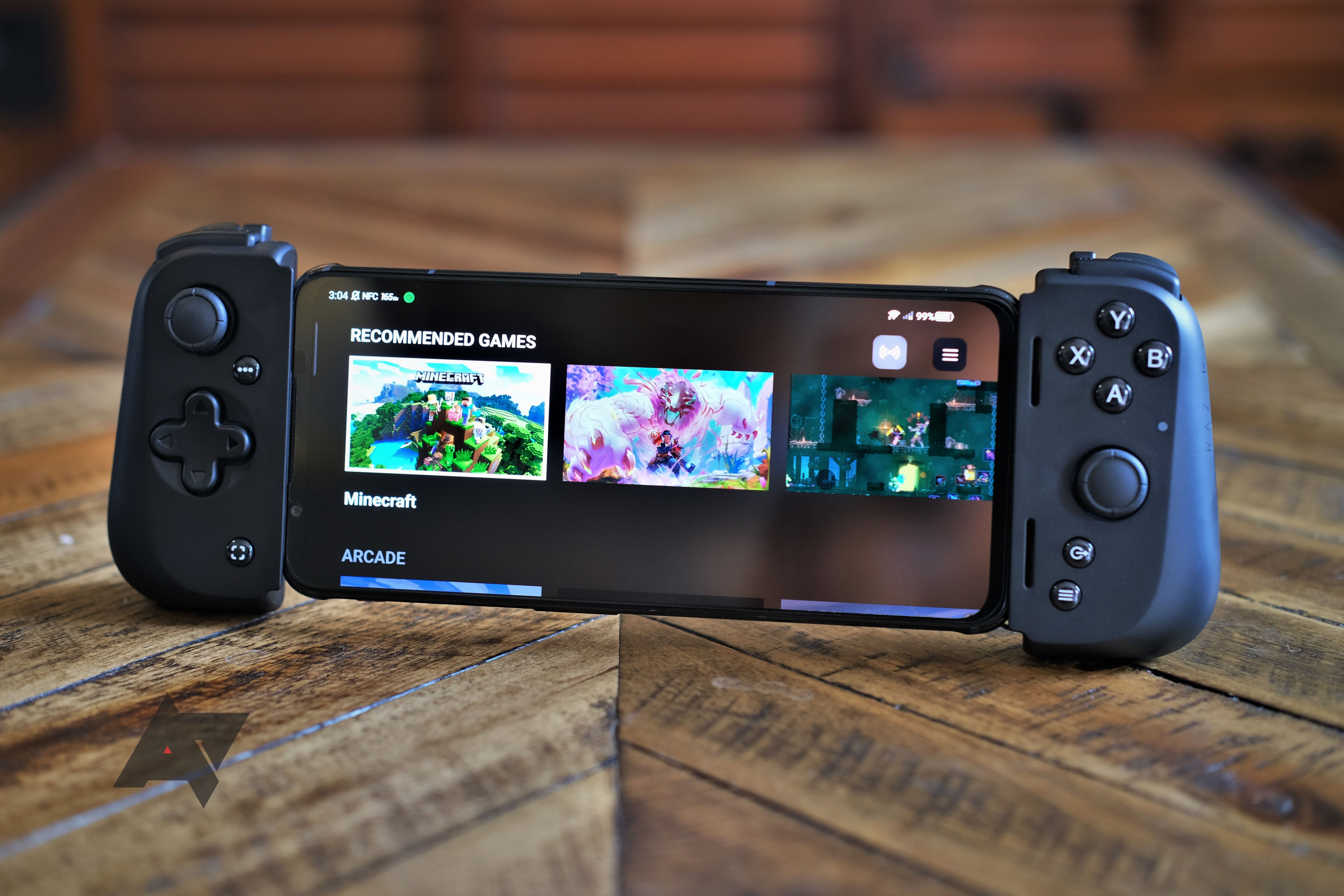

- Backbone one controller vs razer kishi android#
- Backbone one controller vs razer kishi Bluetooth#
- Backbone one controller vs razer kishi series#
You'll need to invest in wireless headphones with the Kishi or else annoy your neighbors by blasting the sound.Īnother difference is the button configuration. The Kishi doesn't have one, nor can you use wired USB-C headphones - the port only works for charging. Next to that USB-C port on the Gamevice is a headphone jack. Both drain battery life from your phone even if you're not using it for gaming.
Backbone one controller vs razer kishi Bluetooth#
Plus, the wired connection removes the input lag you get with most Bluetooth controllers. Instead, they draw power directly from your phone, and you can use pass-through charging while you play via a USB-C port on the bottom of both devices.

Kishi is more similar than different to previous Gamevice models, but it mostly improves on its predecessors.īoth the Kishi and current Gamevice models connect to your phone via a USB-C connector (or Lightning connector for iOS), and neither of the two requires recharging. If that sounds similar to the Switch and its attachable joy-cons, Gamevice thinks so too and is suing Nintendo for patent infringement. Both devices have left and right sides that unlock and spread out like an accordion, so you can slide your phone inside before securing the controller directly onto your phone, turning it into a handheld console. It's evident Gamevice worked on the Kishi, as the form factor is essentially the same. What's different (and similar) between the Kishi and Gamevice For now, Gamevice does have options that work for both iPhones and iPads. If you care about iOS support, Gamevice and Razer are working on a Kishi model to work with iPhones, due to come out later in 2020. A model designed to work with both the S10+ and S9 or Pixel 3a XL and 2 will likely have a similar wobble issue if you use it with the smallest phone in the lineup. We should also point out that, while we haven't reviewed Gamevice models for AC as of yet, they have a very similar design to the Kishi.
Backbone one controller vs razer kishi android#
The company's original designs catered to iPhone and iPad owners, and it seems that Kishi has become its new inroad into the Android market.
Backbone one controller vs razer kishi series#
As of publication, only the S9 series and ROG Phone 1 models appear to be available. In practice, it appears that Gamevice has let several of these models go out of stock. As the market continues to expand, fierce competition among products like the Razer Kishi V2 and the Backbone One ensures that gamers have options suitable for their gaming preferences and needs.In theory, these specific Gamevice models will fit your phone securely. Offering convenience, enhanced gaming experiences, and compatibility with a wide range of devices, these controllers provide precise control and responsiveness. In conclusion, USB-C game controllers have become a popular choice among mobile gamers. Gamers no longer have to struggle with cumbersome touchscreen controls, as USB-C controllers offer a seamless transition to a more traditional console-like gaming experience. This accuracy enhances gameplay and allows for more immersive experiences. This convenience makes USB-C controllers a preferred choice for mobile gamers.Īnother key advantage of USB-C game controllers is the precise movements and actions they offer in games, thanks to their analog sticks and responsive buttons. Gamers can simply connect the controller to their Android device’s USB-C port, and they’re ready to start gaming. These plug-and-play devices eliminate the need for complicated pairing processes. One of the main appeals of USB-C game controllers is their ease of use.

Each controller in this category offers unique strengths and weaknesses, catering to different gaming preferences and needs. While the Razer Kishi V2 is a strong contender in the USB-C game controller market, it faces tough competition from alternatives like the Backbone One.

The Kishi V2 features an extendable bridge design, analog sticks, responsive microswitch buttons, and programmable triggers, all of which ensure precise control and responsiveness, immersing gamers into their favorite games. It addresses the design flaws of its predecessor and enhances the overall gaming experience. This controller is specifically designed to elevate Android gaming to the next level. One standout USB-C game controller in the market is the Razer Kishi V2. These controllers offer analog sticks, responsive buttons, and programmable triggers, providing a more immersive gaming experience compared to touchscreen controls. USB-C mobile gaming controllers have gained significant popularity among gamers due to their convenience, improved gameplay, and compatibility with a wide range of devices.


 0 kommentar(er)
0 kommentar(er)
